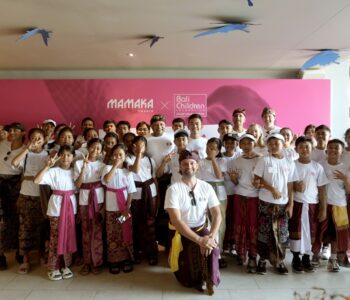One of Bali’s most ancient archaeological sites has for some reason remained off the main tourist trails. Gunung Kawi, found in the Tampaksiring area 30-minutes north of Ubud, is a stunning complex of shrines of an old Hindu civilisation from the 11th Century, and is a must-visit for any lover of history and culture.
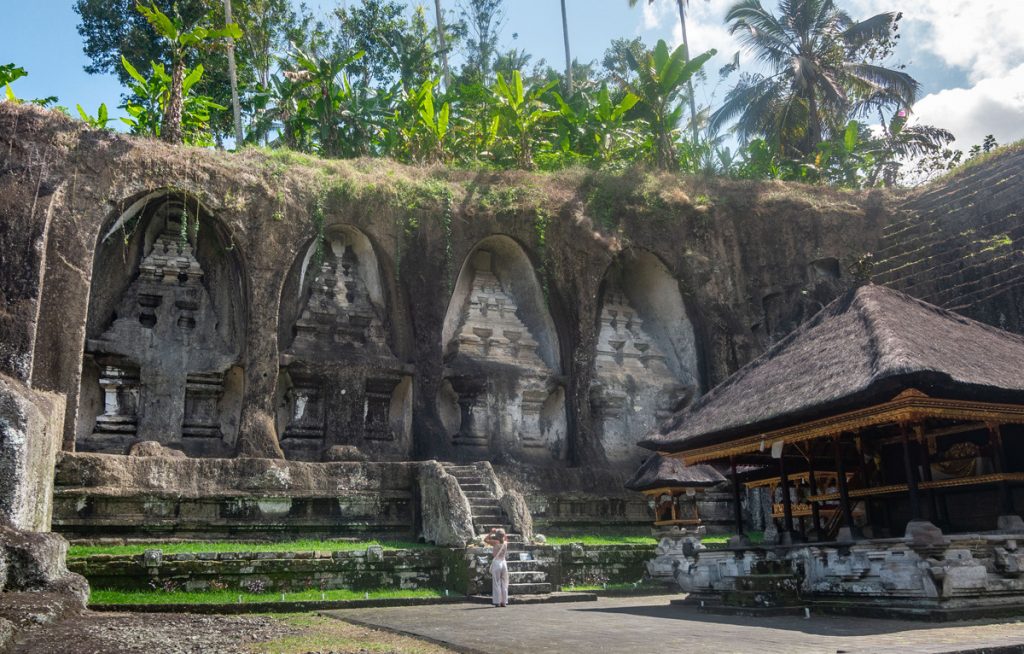
History of Gunung Kawi Temple
Tampaksiring is steeped in history and mythology, its very name derived from an ancient legend. A king known as Mayadenawa once ruled over Bali; this malevolent monarch was said to possess great powers and had forbidden any Hindu worship within his kingdom – coming from a Mahayana Buddhist background.
There was a great battle between Mayadenawa and the god Indra – fighting on behalf of the Hindu believers in Bali. The evil king was said to have used his magical powers to change the landscape of the battlegrounds to repel Indra’s forces, using his footsteps to carve into the mountainside. This is the origin of Tampaksiring, tampak meaning foot and siring meaning slanted.
It is the very same battle that brought birth to Tirta Empul, the famous holy water temple in Tampaksiring. A water source said to be made by the god Indra to heal his poisoned troops. The downfall of Mayadenawa in this ancient siege is also one of the legends behind the Galungan Festival, when the triumph of good (dharma) over evil (adharma) is celebrated.
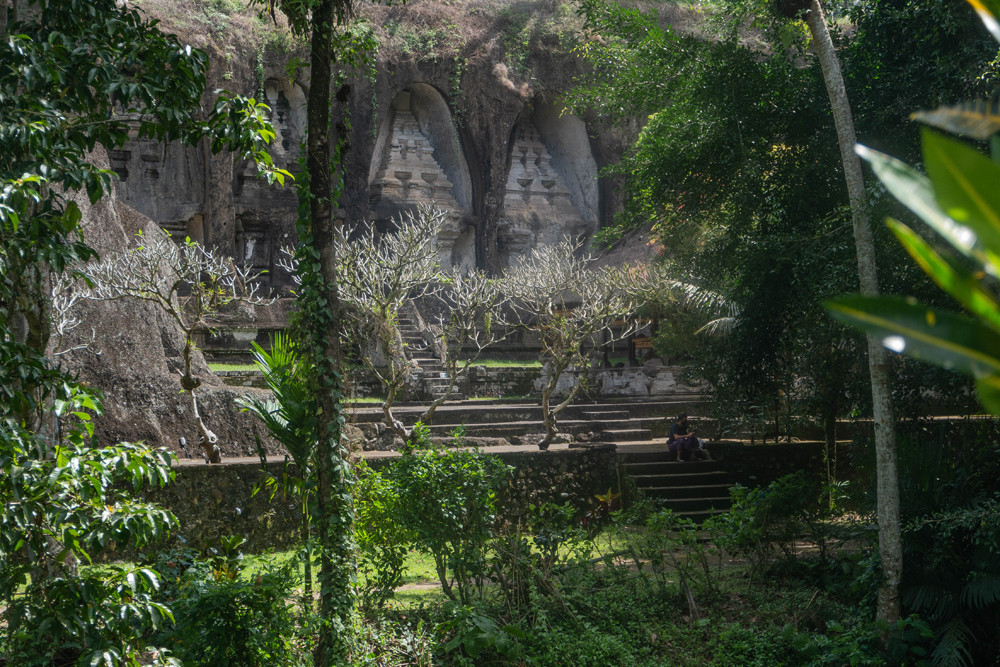
With ancient myths already setting the scene, the archaeological shrines of Gunung Kawi add to the mystique of Tampaksiring.
Your journey starts at the top of a steep valley of the Pakerisan River, a body of water deemed highly religious to the Balinese. The river continues through to another of Bali’s archaeological sites, Goa Gajah Temple, further downstream.
As Gunung Kawi is a holy site, you will be asked to wear a sarong and sash for your journey through. Dressed appropriately, you will start your long walk down the flight of stairs to the river. However, your walk is accompanied by magnificent views, where a mosaic of terraced paddy fields cascade dramatically down the valley’s side, and towering palm trees jut around their edges
You’ll know you’ve reached the start of the temple area as the stairs suddenly become encased by sheer faces of limestone left and right, leading into an ancient archway that acts as the area’s dramatic entrance.
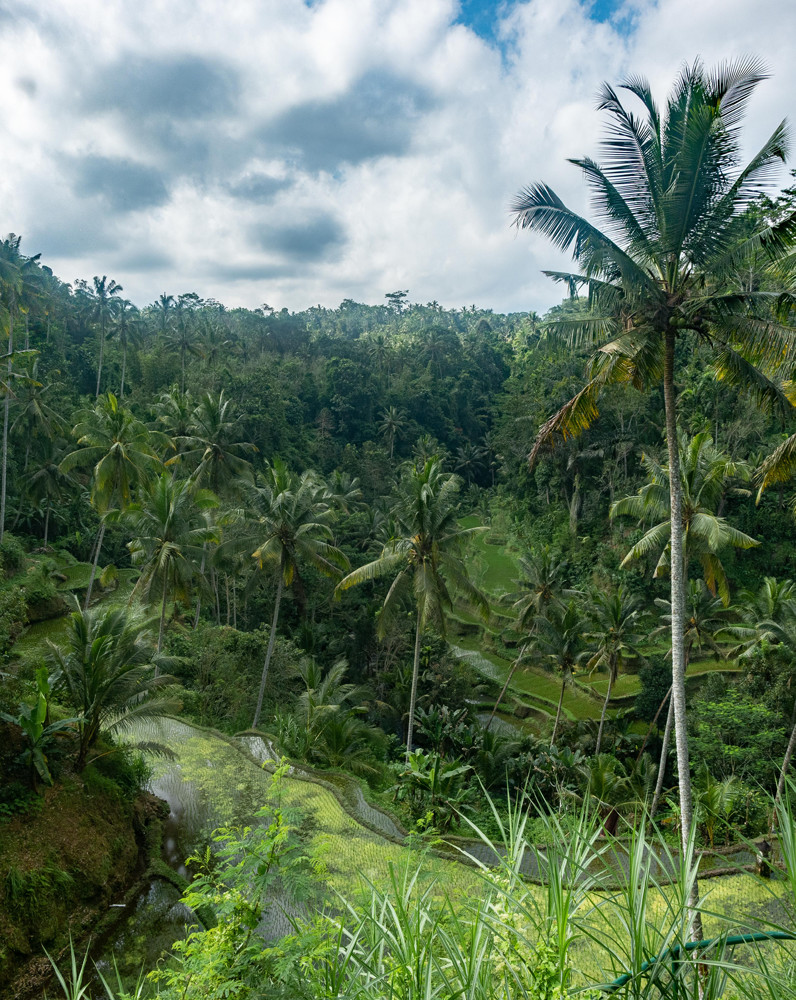
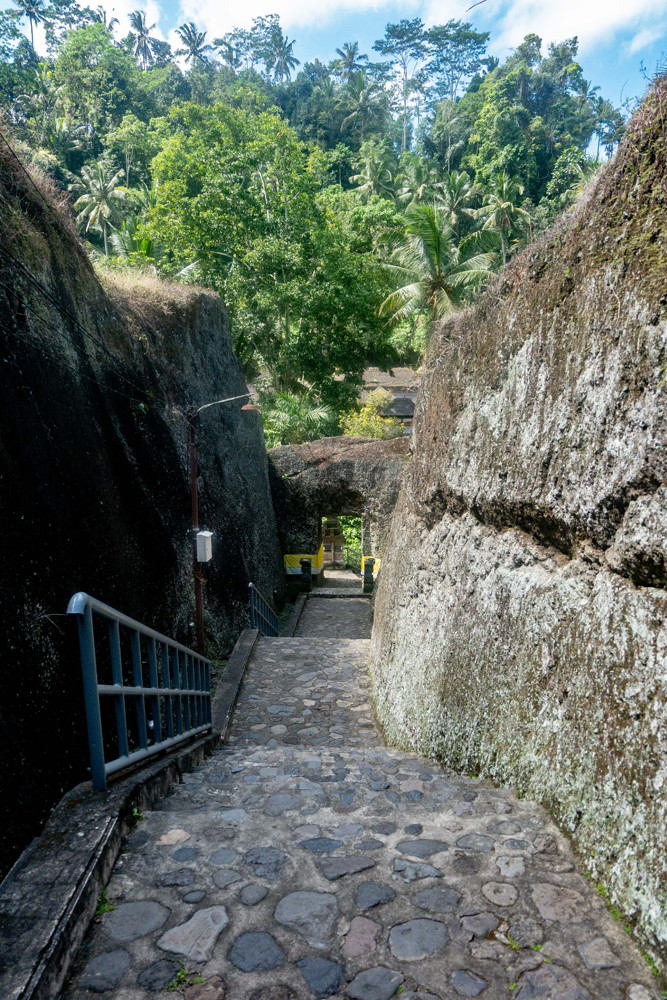
Gunung Kawi is home to ten pedharman shrines; these are shrines specifically dedicated to ancestors, in this case of ancient kings. What makes them particularly unique is that these majestic shrines are carved directly into the cliff-face and tower a magnificent eight-metres in height. Five shrines stand side-by-side on the east side of the Pakerisan River, another four opposite on the west side. The final shrine stands alone on the Bukit Gundul mountainside.
Within this impressive complex you will find caves and rooms cut into the rock-face as well; a honeycomb of tunnels leads you into different rooms where ascetics or hermits used to meditate, the stone walls weathered through the centuries, but still intact.
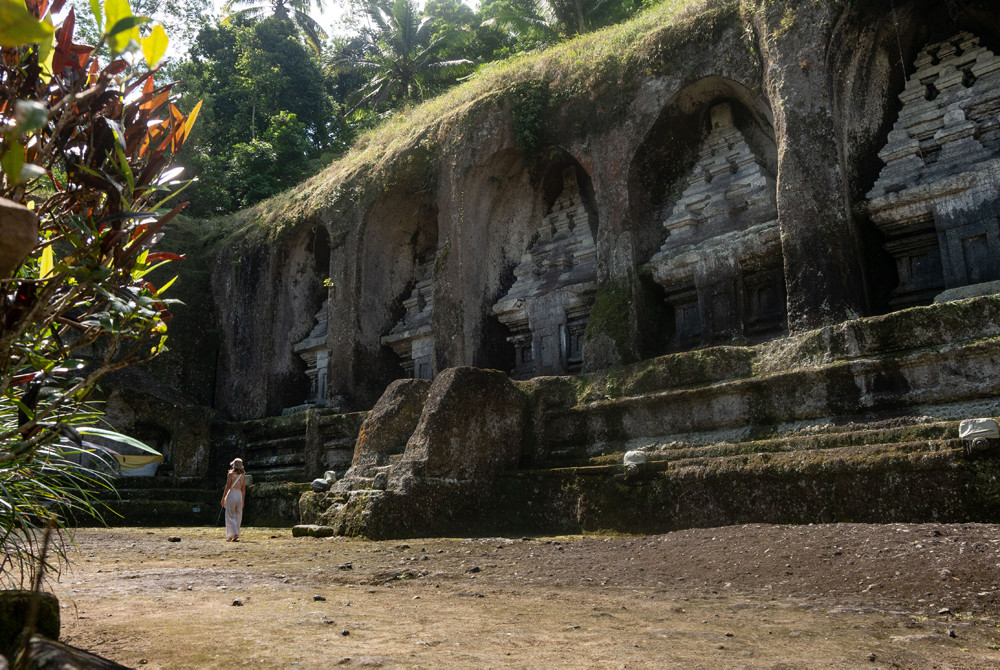
It is believed that Gunung Kawi was built in 1080AD, dedicated to kings of old. The story starts with the great King Udayana of the Warmadewa Dynasty. Udayana is one of Bali’s earliest historical figures; his first son was the equally revered Airlangga, who became the hero, ruler and king of Java – the only ruler of the Kahirupan Kingdom. Udayana’s second son was Marakata, who ruled after his father’s death; then third son, Anak Wungsu, who ruled after his brother’s death.
It is said that it was King Anak Wungsu who created the shrines in dedication to his father, brothers and his mother, Mahendratta, the princess of the Javanese Medang Kingdom (later reclaimed by Airlangga). Other theories suggest that the shrines are dedicated to King Anak Wungsu himself, along with his queens and concubines.
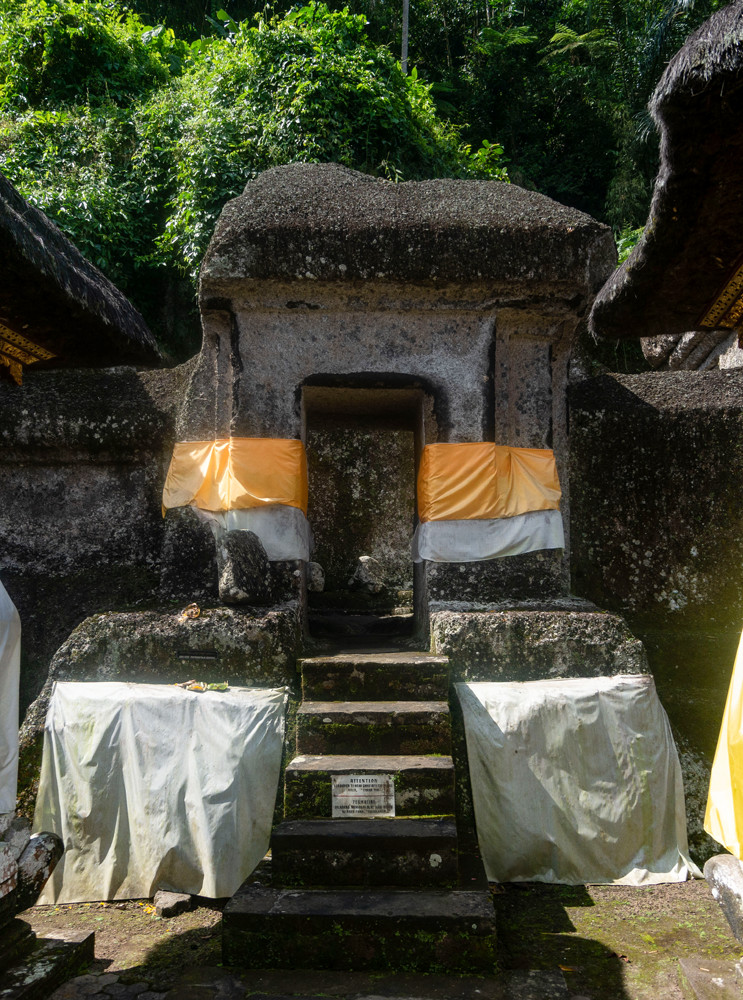
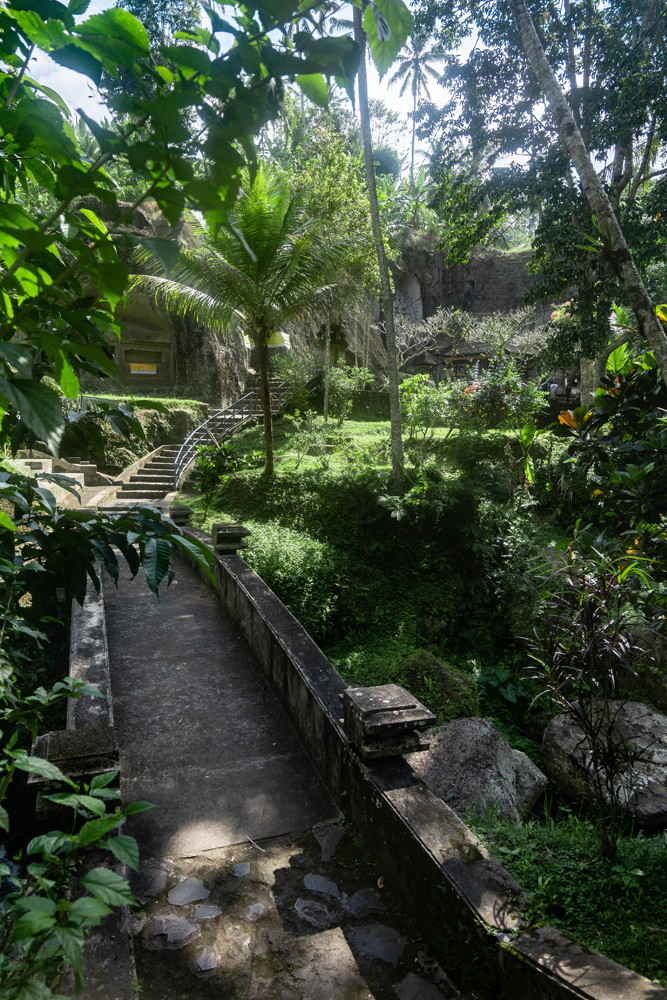
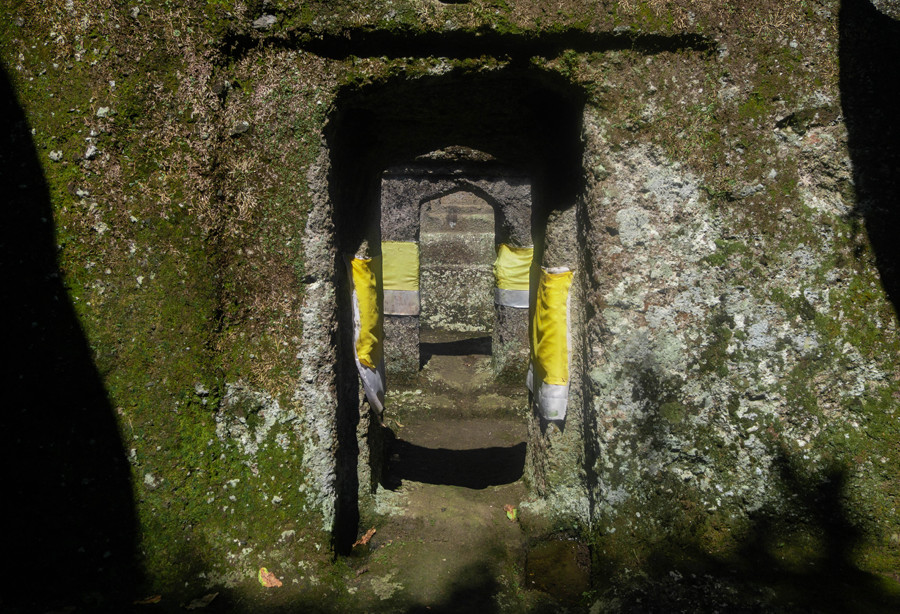
Inside the Gunung Kawi complex lies Pura Gunung Kawi, a modern Balinese Hindu temple where prayers and offerings are still practiced. As a source of holy water, Gunung Kawi plays an important role, especially on the banks of the sacred Pakerisan River. The river flows down into the Tirta Empul as well, where the Balinese Hindu practice the melukat cleansing ritual.
Beyond the giant shrines that stand by the riverbanks, heading up the valley on the east side (far side of the entrance) you’ll find more caves carved into the valley walls, used by meditating pilgrims of all walks of life. Nature has taken over these rooms over the many years: thick, deep-green moss cover the walls, vines hanging at their openings, giving it a tomb-like atmosphere you’d expect to see in an Indiana Jones movie.
Between the shrines and temples, rice fields and lush vegetation fill the spaces, giving Gunung Kawi the atmosphere of a ‘land lost in time’. It is a testament to Bali’s long and rich historical tapestry.
Watch this little tour of Gunung Kawi on the NOW! Bali Facebook Page:



